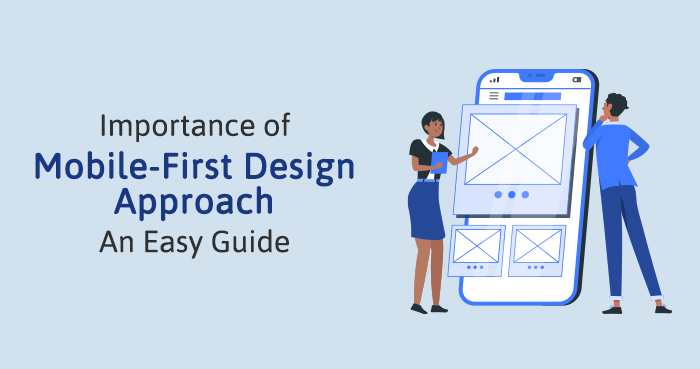A few years ago, when you were talking to your friends about purchasing a gift for your soulmate, you needed to go to the nearest gift shop but now-a-days, you can just take out your mobile device and searching for the best online gift store online. You will see a thousand websites are listed down in SERP and it’s just a few clicks away to choose the right gift for your loved ones!
So, what do we do now?
Everything we need to know or want to make a purchase decision; we just took out our mobile phone and searched for it online.
That is just how essential phones and websites optimized for mobile phones have become. If your website is designed for a mobile phone, the probability of choosing your website to learn something new is more.
There are about 5.11 billion unique mobile users in the world at present. 2 billion people access the internet only using their mobile phones and by 2025, it is believed the numbers will reach 3.7 billion.
These statistics showcase the huge opportunities presented for your business to sell products and engage customers using mobile phones alone. Especially as mobile phones are used by 91% of internet users to go online and internet traffic generated via mobile phones accounts for 52.64% of the total.
Despite these raging numbers, mobile designs are rarely given any importance.
Why are you still focused on designing for a dying medium (aka desktops)? And then trying to implement it on new technology?
Why not design a website based on the most used device?
It can easily be accessed on a desktop as well.
With a mobile-first approach, the design focuses on creating a website for the smallest screen: mobile and working towards bigger screens: desktops.
Contents
What is a Mobile-First Design?
Designing mobile-first has become an important strategy when creating a website, app or software. Mobile has more restrictions and limited screen, so your mobile-first design will only include the important and necessary features. This helps you mitigate the risk of reducing functionality and enhances user experience.
The mobile-first design philosophy insists on providing a design for the mobile-first and then expanding to other screens. However, for many websites and businesses, mobile designs have often been an afterthought in the design process.
Here’s a tip for you: Google favors mobile-friendly websites, so designing a site for mobile-first can be a beneficial step. Consult any web application development company for better understanding.
Why is Mobile-First Design the Right Approach?
-
Moving forward with Progressive Enhancement:
As the mobile design is more restricted and the hardest to make, it should be done first. Designing for other devices becomes easier after designing for the mobile. This means the small screen will only include the essential features and will be the foundation for your UX design on other screens as well. When the limitations are worked on, the result will be a lean and neat product that will emphasize the key features and message of your brand.
-
The opposite approach of Graceful Degradation:
When the product you design is from the most advanced and complex end, the desktop. The design is built from a version with well-rounded features with all the supplementary and core features. The unnecessary features are then stripped to fit the smaller screen. This philosophy impacts the experience as it treats the mobile design as an afterthought
Thus, progressive enhancement is important for a mobile-first approach and you must adopt it for a greater user experience and then expand the features for bigger screens.
The Benefits of Mobile-First Design
Using a mobile-first approach in digital strategies can benefit your business and brand in more ways than one. The mobile-first strategy will help maximize the reach of your website across all the different devices for more benefits.
1. Content is Important
Content is prioritized when designing for mobile. With limited space, a mobile based design requires essential information while mitigating the irrelevant aspects. Giving importance to content ensures that your final design is neat, decluttered and brings out the brand voice clearly. The filtered and beneficial use of content increases the focus on conveying the core message of your brand.
Did you know that a website is judged based on the responsive web design by around 94% people (Search Engine Watch, 2019). Thus, when designing for a mobile, only the essential content must be added. It means that there will be fewer buttons on the menu and the user will have an easy time navigating the site. People will have an easier time discovering more about your brand and company.
3. Increased Reach
A simple design and user-friendly interface will help increase reach. Users are more likely to return to a satisfactory site that only shows relevant details without a clutter of unnecessary information or lagging websites.
4. Improved User Experience
How do you improve the user experience? By focusing on the mobile-first design and prioritising the design of the website, app or product on the mobile. The mobile-based design will only include the features that will work well on the mobile. With increased reach, easy navigation and decluttered content, a user will have a better experience and is more likely to return to the website for whatever products or services you offer.
Right Approach to launch a Website for your business is to get a help from responsive web design company india
Tips to make Mobile First Design a Success
There are myriad ways in which you can create a successful mobile-first design. Here is a list of four helpful tips that can give you a heads up-
1. Decide the Visual Hierarchy
When deciding on the elements, it is crucial to identify the relevance of each element and where it falls in the hierarchy on the interface. So make a list on a document or spreadsheet of all the content that will be required on the interface. If there is space left, add other elements to it. Forming a hierarchy and priority list will ensure that your interface is neat, organised and contains the necessary content.
2. Focus on the content
As the mobile design can only include the essential features it is important that you narrow down the content that is necessary to convey the message, show products or add to the brand. Make the content precise, avoid decluttering and distractions. On a mobile screen, the content should provide all that the user is looking for in a simple manner.
3. Analyze Interaction Points
Smartphones are constantly evolving and improving and the content a brand offers must do that as well. However, the emphasis on improving and engaging the user is forgotten. Most websites are still lagging, which leads to poor engagement and user experience. You should focus on making CTA more responsive and engaging, choose the right colours for the site, give hyperlinks space and use drop-down tabs.
4. Keep it Simple
A user prefers easy navigation around a site, with simple instructions and tools. Do not frustrate the users or burden them with unnecessary pop-ups, ads or content that might be irrelevant to what they are seeking. Limit the content with a focus on what the user is looking for on the site.
The user is becoming more dependent on smartphones to access and browse the internet. A responsive mobile-first design is becoming essential for running a business online. Users must be able to easily browse and find the information they are looking for without having to search too much. Here A designer also takecare of UX/UI Design Also. Checkout Top 5 UI/UX Design Trends 2020 So remember these points and you are ready to build your mobile-first design.












